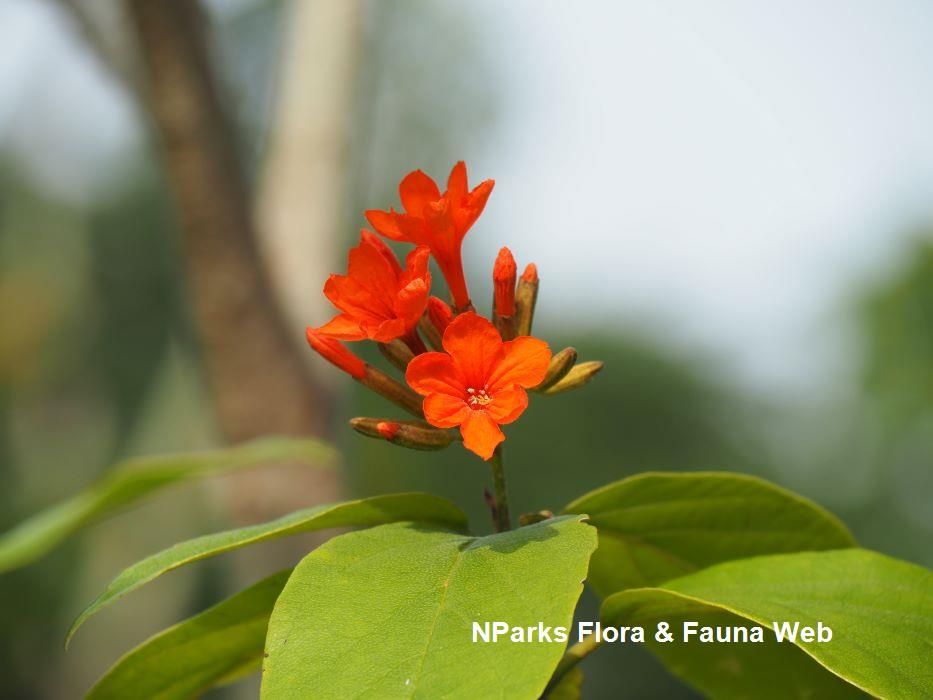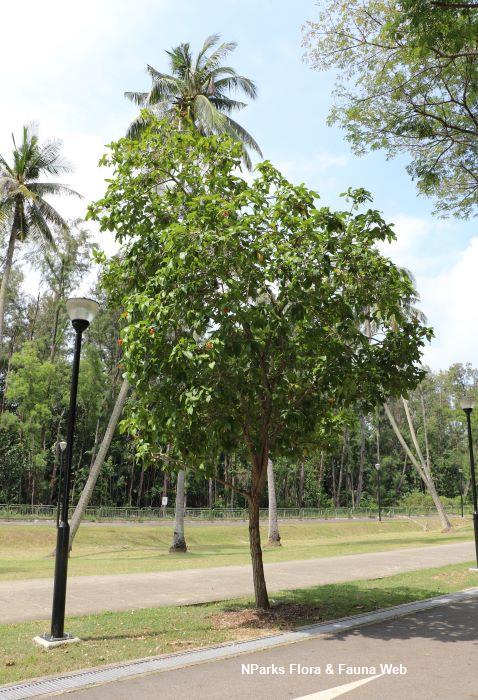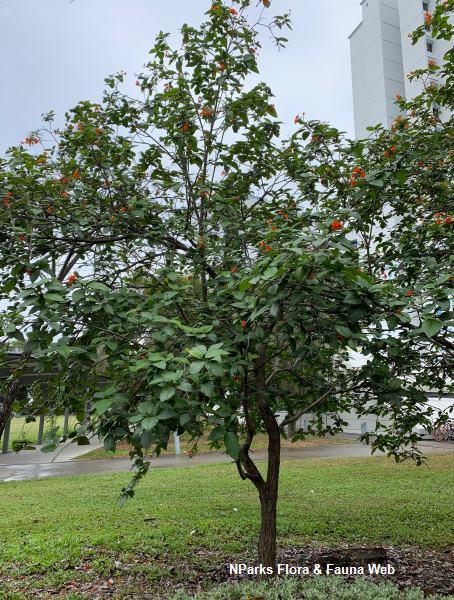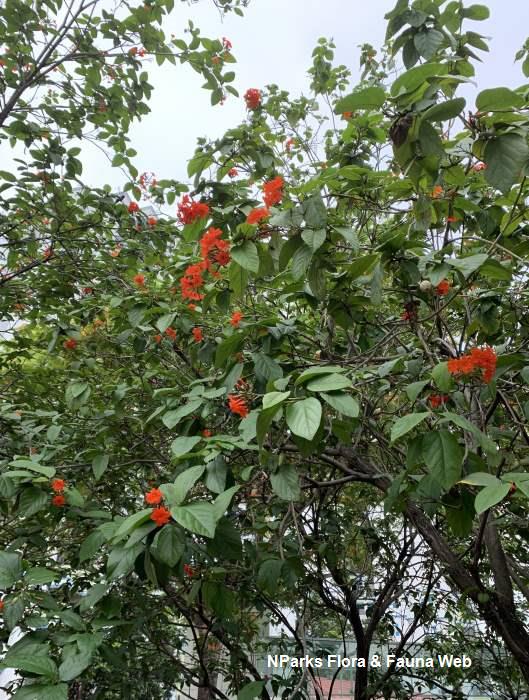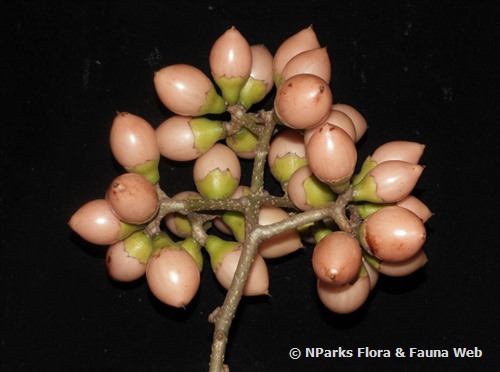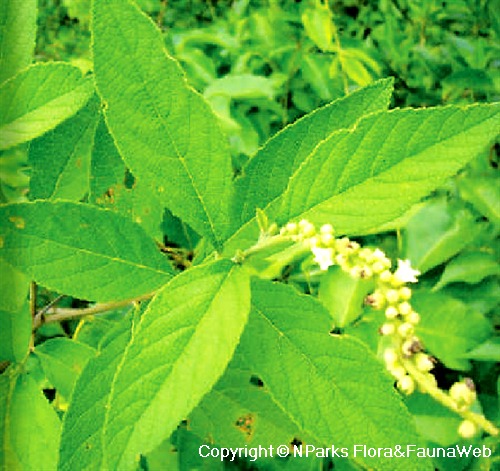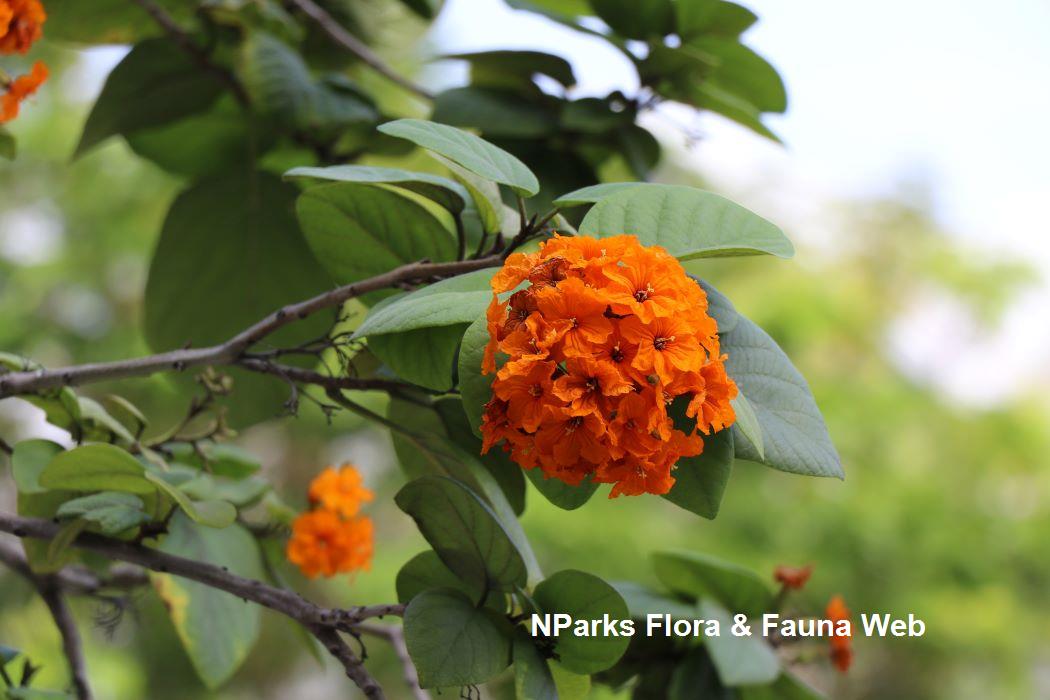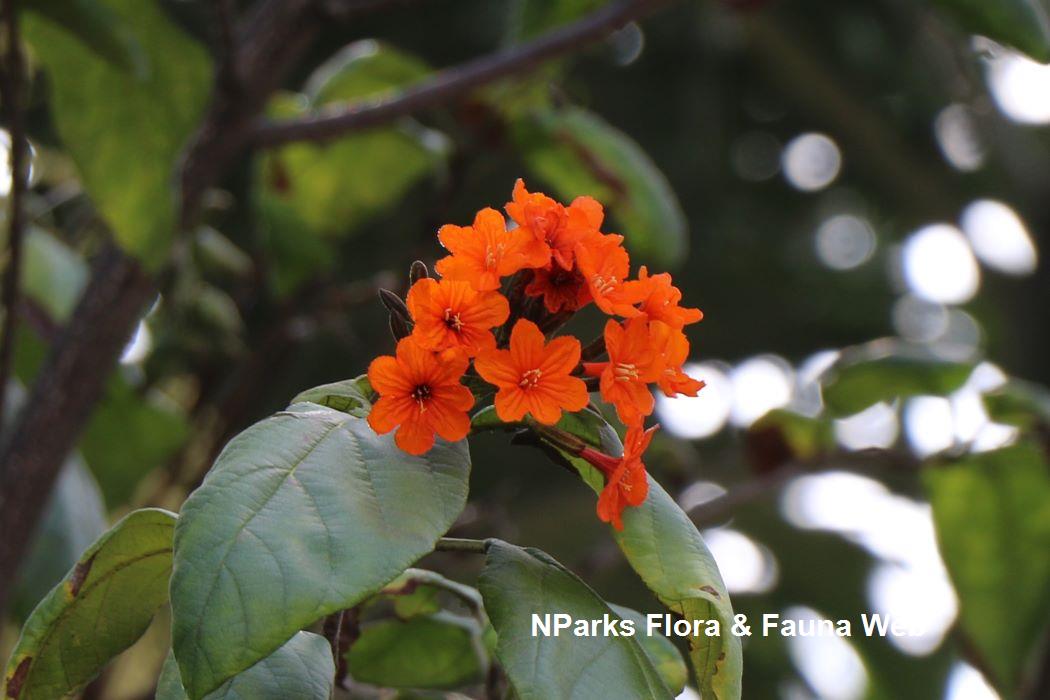
Back
Cordia sebestena L.
| Family Name: | Boraginaceae |
| Common Name: | Geiger Tree, Sebestens, Scarlet Cordia |
Name
Classifications and Characteristics
| Plant Division | Angiosperms (Flowering Seed Plants) |
|---|---|
| Plant Growth Form | Tree |
| Lifespan (in Singapore) | Perennial |
| Mode of Nutrition | Autotrophic |
| Maximum Height | 10 m |
Biogeography
| Native Distribution | The Caribbean region, Central and North America |
|---|---|
| Native Habitat | Terrestrial |
| Preferred Climate Zone | Tropical |
| Local Conservation Status | Non-native |
Description and Ethnobotany
| Growth Form | Medium-sized tree, able to grow up to about 7 - 10 m tall. |
|---|---|
| Crown | It has a round to vase-shaped crown. |
| Foliage | Green ovate leaves, simple and alternate arrangement, margins undulate, upper surface rough, measuring about 20 cm long and 11 cm wide. |
| Flowers | Orange funnel-shaped 5 to 7-petaled flowers borne on a terminal panicle inflorescence, each flower about 4 cm long, short yellow-orange stamens present, petals irregular and wrinkly. |
| Fruit | Fruit is a white fleshy ovoid drupe, contains 2 - 4 seeds. |
| Habitat | It can be found in sandy or rocky coastal thickets. |
| Etymology | Genus Cordia is named after Valerius Cordus (1514 - 1544), a German botanist and pharmacist, and considered as one of the fathers of pharmacognostics. |
| Ethnobotanical Uses | Edible Plant Parts : Edible Fruits |
Landscaping Features
| Desirable Plant Features | Ornamental Flowers |
|---|---|
| Landscape Uses | Parks & Gardens, Small Gardens, Coastal |
Fauna, Pollination and Dispersal
| Fauna Pollination Dispersal Associated Fauna | Bird-Attracting, Butterfly-Attracting |
|---|---|
| Pollination Method(s) | Biotic (Fauna) (Insects (Butterfly, Moth), Vertebrates (Bird)) |
Plant Care and Propagation
| Light Preference | Full Sun |
|---|---|
| Water Preference | Moderate Water |
| Plant Growth Rate | Moderate |
| Rootzone Tolerance | Moist Soils, Well-Drained Soils |
| Propagation Method | Seed |
Foliar
| Mature Foliage Colour(s) | Green |
|---|---|
| Foliar Type | Simple / Unifoliate |
| Foliar Arrangement Along Stem | Alternate |
| Foliar Shape(s) | Non-Palm Foliage (Ovate) |
| Leaf Area Index (LAI) for Green Plot Ratio | 3.0 (Tree - Intermediate Canopy) |
Floral (Angiosperm)
| Flower Colour(s) | Orange |
|---|
Fruit, Seed and Spore
| Mature Fruit Colour(s) | White |
|---|---|
| Fruit Classification | Simple Fruit |
| Seed Quantity Per Fruit | Few (1-5) |
Image Repository
Others
| Master ID | 1531 |
|---|---|
| Species ID | 2824 |
| Flora Disclaimer | The information in this website has been compiled from reliable sources, such as reference works on medicinal plants. It is not a substitute for medical advice or treatment and NParks does not purport to provide any medical advice. Readers should always consult his/her physician before using or consuming a plant for medicinal purposes. |

